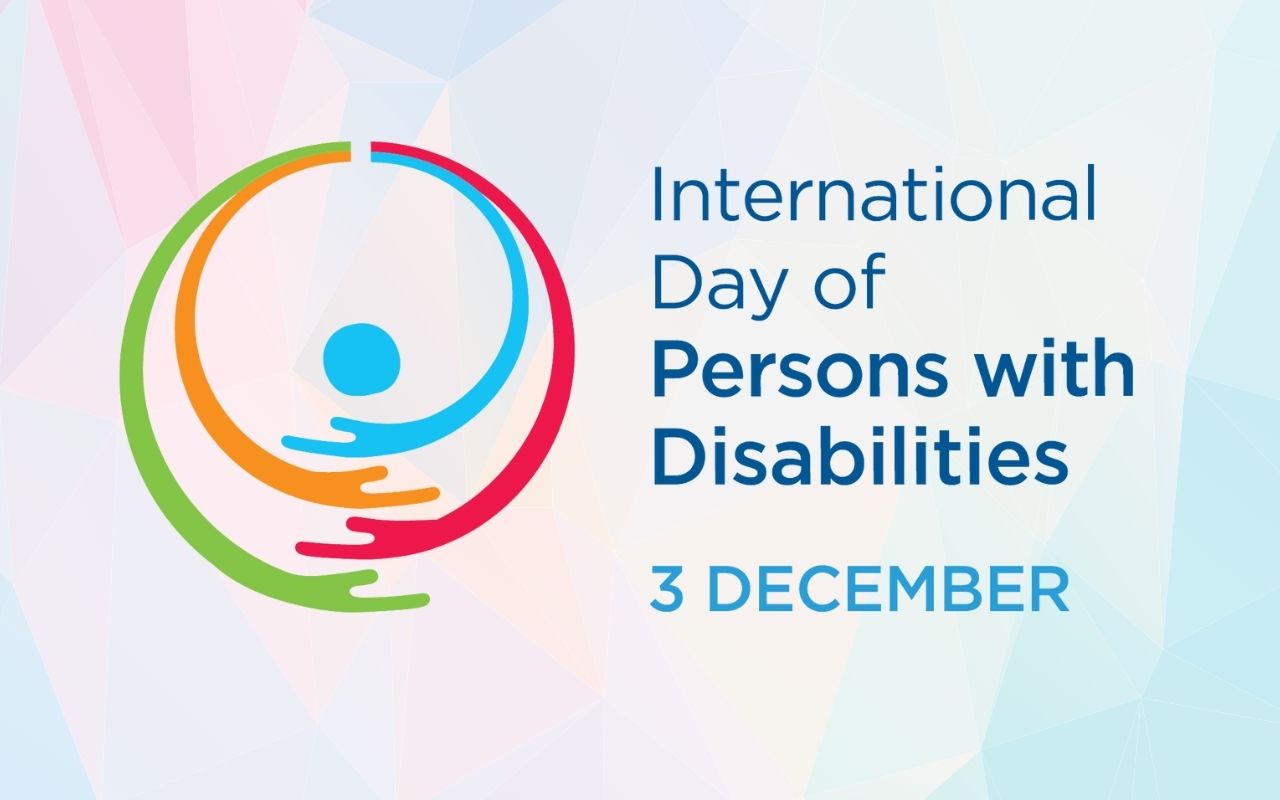
International Day of Persons With Disabilities — December 3
The International Day of Persons with Disabilities was founded by the United Nations and World Health Organization in 1992 to promote the awareness and understanding of people with disabilities. It is celebrated every December third. This year’s theme is “Not All Disabilities Are Visible.”
Why is this day so important? First, it brings awareness to the biggest minority of people in the world—the disabled, with nearly one billion individuals across the world in this category. Second, it’s to bring attention to the problems that people with disabilities face, whether these impediments are physical or social. Third, it highlights that this is a worldwide issue, with many individuals in developing nations being impacted. Lastly, this day also highlights the Americans with Disabilities Act (ADA) that defines the rights of people with disabilities and provides legal protection for them within the United States.
Disabilities
What is an invisible disability? And what is a disability at all? The definition of disability according to the Merriam-Webster dictionary is “a physical, mental, cognitive, or developmental condition that impairs, interferes with, or limits a person's ability to engage in certain tasks or actions or participate in typical daily activities and interactions.” A disability is NOT an illness—it cannot be caught by other people. For example, while COVID-19 is an illness and contagious, many people suffer long term effects from the illness who no longer have the disease. The long-term effects are the disability, but the illness is not. A disability can be temporary, such as having a broken leg and having limited mobility for a few weeks, as opposed to something like Cerebral Palsy, which is chronic and permanent throughout an individual’s lifetime. Other disabilities, like Parkinson’s, are progressive. Some disabilities, like a congenital or genetic condition, may be stable throughout a person’s entire life.
Invisible Disabilities
Many disabilities are visible—someone who uses a wheelchair for mobility, for example, or a person who uses a cane for either mobility or because of a vision impairment. These are examples of the two most common types of visible disabilities, and the ones that are perhaps the most obvious to people through casual encounters. But many disabilities are not as easily perceived.
Many forms of mental disabilities, such as autism or schizophrenia, are not immediately obvious without actually interacting with an individual for some amount of time. Some sensory disabilities, such as being hard of hearing or deaf, are likewise not as readily apparent. And in the wake of COVID-19, many individuals are experiencing long-term health effects that limit the individual long after they no longer have the disease, but may not be immediately obvious. Many mental health disabilities carry a heavy stigma in society, such as schizophrenia, or chronic depression. Part of the goal of the International Day of Persons with Disabilities is to de-stigmatize these conditions and create greater awareness of them in society so that they may lead better and more fulfilling lives. In the end, this helps everyone—not just people with disabilities.
International Disability Statistics
According to the World Health Organization (WHO), 15% of the people in the world have some sort of disability—that’s nearly a billion people worldwide. This includes 720 million adults and 93 million children. In the U.S., it is estimated that 1 in 4 Americans has some sort of disability. Almost everyone will have some type of disability during their lifetime. People with disabilities are considered the world’s largest minority. With population growth, longer lifespans and medical advances, this figure will continue to grow in the future. 80% of people with disabilities live in developing countries, and the World Bank estimates that as many as 20% of people in developing countries have a disability. Also from the World Bank, mortality for children with disabilities may be as high as 80% where infant mortality for children under the age of five has decreased under 20%. In 2004, a study was done in the U.S. which found that only 35% of people with disabilities were employed, compared with 78% without disabilities. Two thirds of the disabled individuals surveyed said that they would like to work but could not find jobs.
Many disabilities are acquired later in life, largely due to war. For every one child killed in a war, there are three who are permanently disabled. According to the WHO, in some countries up to 25% of disabilities are a result of injuries or violence. Furthermore, people with disabilities—particularly women and children—are more prone to being victims of violence than the general population.
Conclusion
The challenges facing people with disabilities worldwide is a very profound one, particularly in light of the aftereffects of COVID-19. With nearly one billion people affected by some type of disability worldwide, the issues of accessibility, social inclusion, employment, and access to health care will be critical ones in the years ahead as we move farther out of the pandemic. The key to overcoming many of these barriers is awareness in the general population of how endemic these challenges are. Just because a person isn’t disabled now, does not mean that they will not face a life-debilitating disability in the future. With people living longer, the number of people with disabilities is expected to grow. With that growth, the number of challenges is expected to grow as well. At the San Jose Public Library, we hope that by bringing more awareness to individuals with disabilities, we are doing our part to make the world a more inclusive place.


Add a comment to: International Day of Persons with Disabilities